Southwest Michigan field crops update – June 5, 2025
Wheat is ending pollination and starting kernel development. Corn and soybeans reached early vegetative stages, but cool weather slowed development. Dry, windy conditions allowed lots of field work, including forage raking and baling.

Weather
Temperatures will cool slightly from the mid-80s seen earlier in the week. Precipitation starting Wednesday (June 4) into Thursday morning totaled 0.5 inches in the northwest part of the region to nearly 2 inches near Coldwater, Michigan. Highs in the 70s are expected through this weekend and into Wednesday (June 11) with lows in the 50s. By the end of next week, highs will reach the 80s and thunderstorms are expected next weekend.
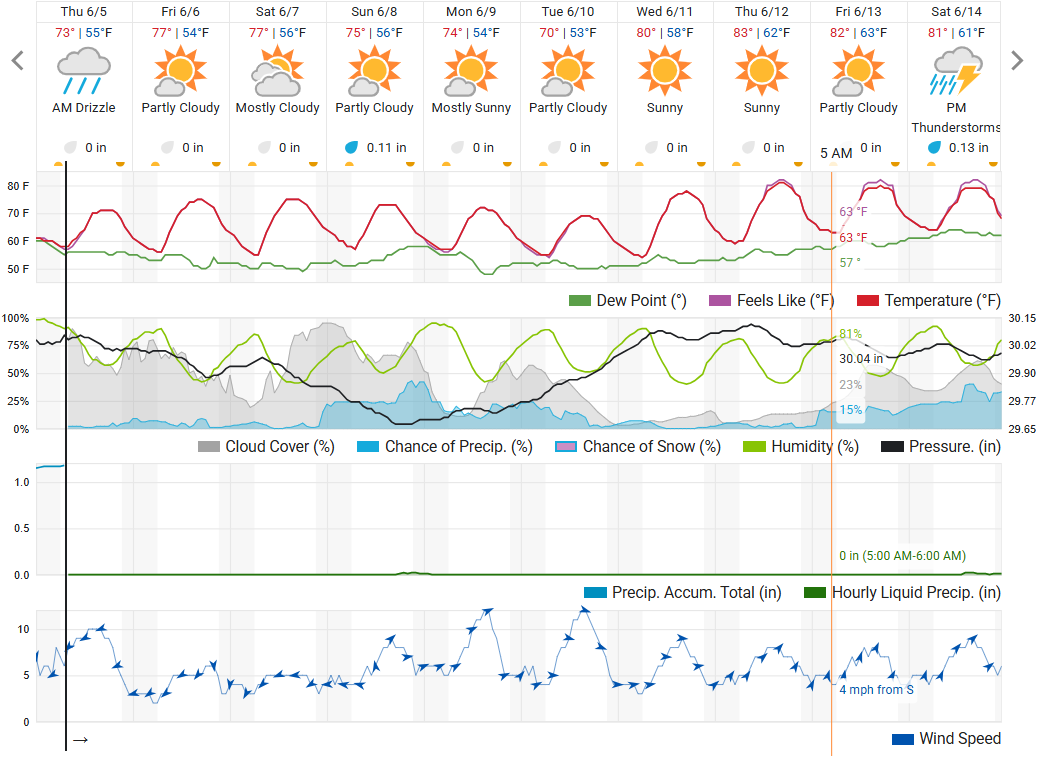
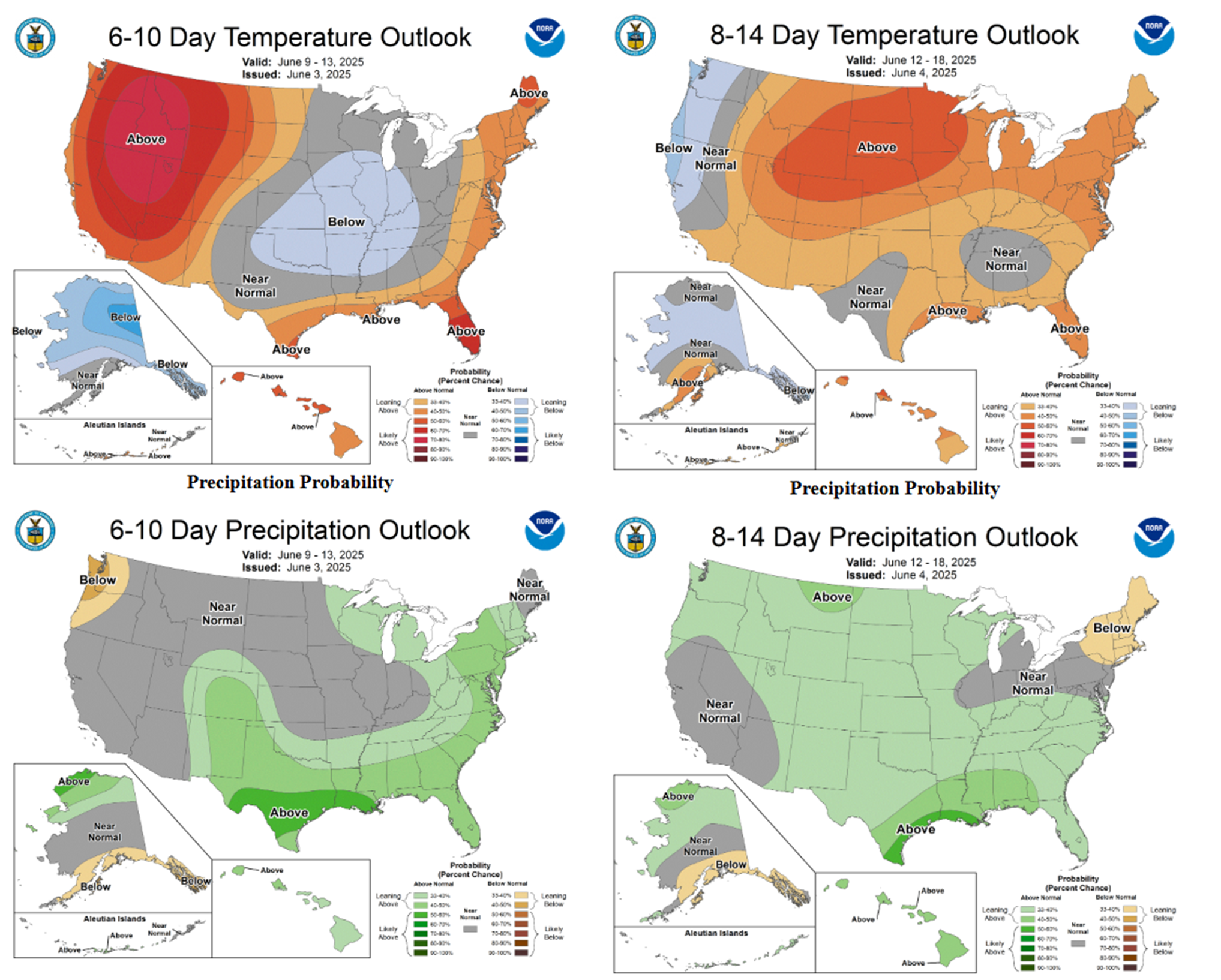
Crops and pests
Soybeans and corn are in their early vegetative stages across the region. As of June 1, National Agricultural Statistics Service survey data shows that 62% of corn and 51% of soybeans have emerged across the state. Soybeans are between VC and V2 (second trifoliate emerged). With soybean growth stalled due to previous cold weather, warm temperatures from the past week are expected to help continue development. Corn is between emergence and V5. Many people were able to get post-emergence herbicide and sidedress nitrogen applications out this past week. Weather conditions for the week ahead will also provide a good window for this. Continue scouting for early-season pests like seedcorn maggot, black cutworm, grubs and slugs.
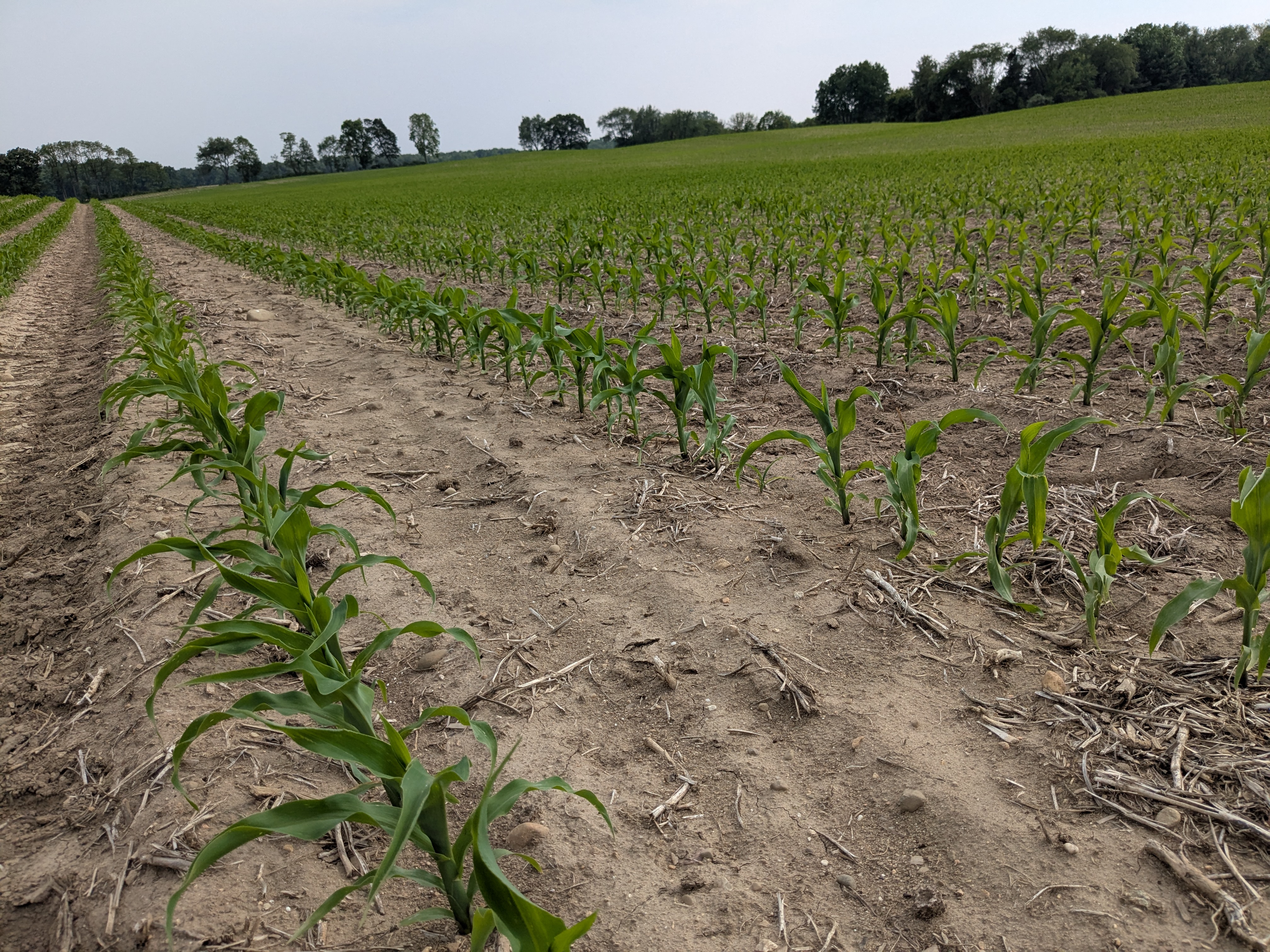
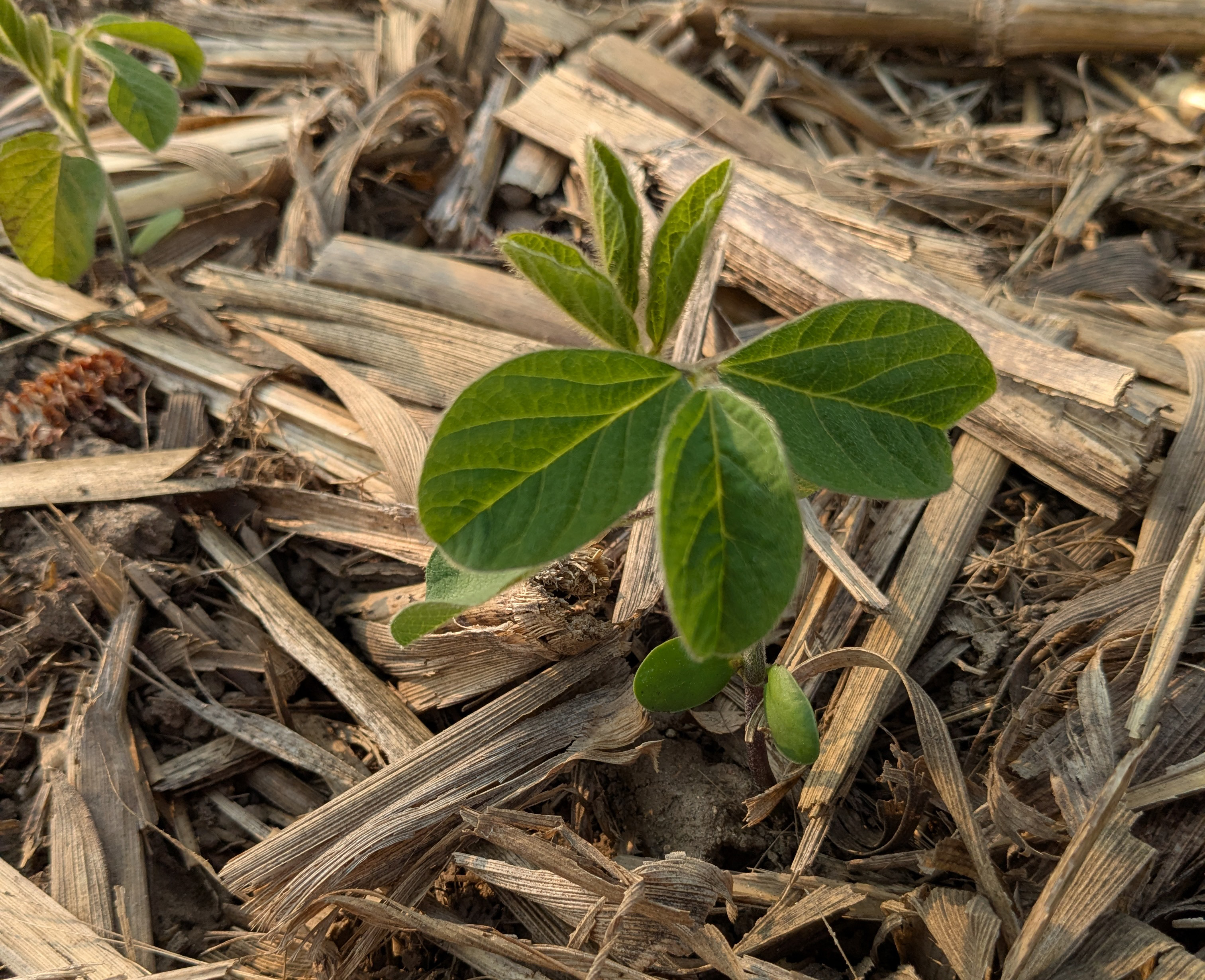
Winter wheat heads have ended pollination and are beginning their grain filling stage. Minor foliar disease and insect pressure are present in most fields, and many have gotten T3 fungicide applications out. The June 5, 2025, Field Crops Virtual Breakfast Series session discusses more about fungicide decisions to protect the flag leaf after pollination, which is when significant losses can occur. If injury to wheat’s flag leaf occurs late in grain fill, losses are minimal as the plant can redirect sugars from other green parts like the spike and stems.
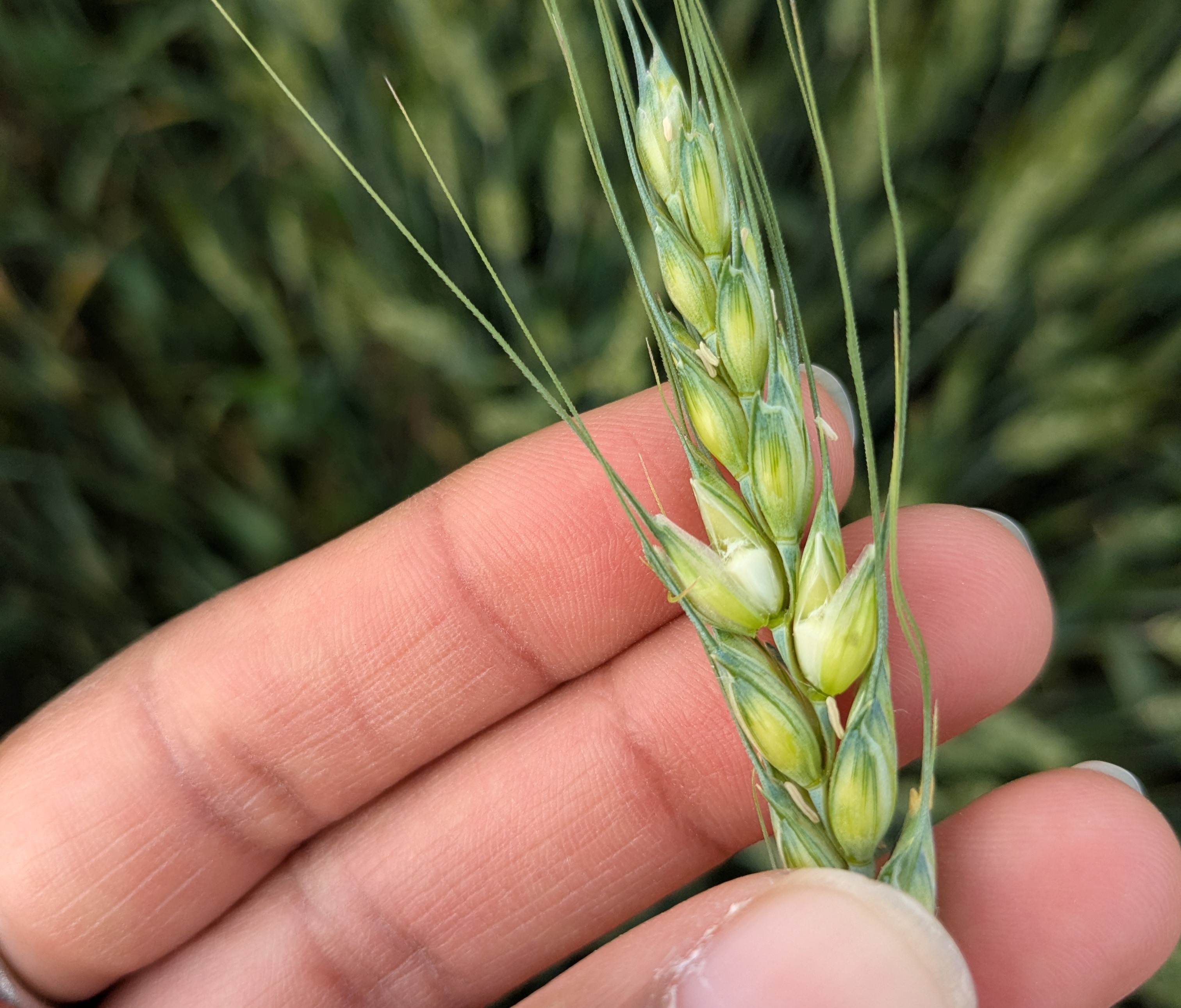
Potatoes have begun tuber set and rows have not yet closed, making this timeframe critical for irrigation and fertilizer decisions. Water uptake increases significantly during this period and potatoes experiencing dry conditions will abort tubers. Colorado potato beetle adults are out in fields and continued scouting will help catch the egglaying activities.

Alfalfa and grass forages have largely been cut or baled ahead of the most recent rain. After today, the forecast shows several days without precipitation. This will provide a good window for drying if some fields have not been finished. Leafhopper would be the next insect to scout for, and tools like Michigan State University’s Enviroweather can help keep an eye on populations.

Checking for frost damage on an 80 F day?
Between this past Friday and Sunday, temperatures dropped to as low as 35 degrees Fahrenheit in some areas with some fields seeing frost. While frost damage reports have not been widespread, there have been reports of frost damage in low-laying areas of corn fields in Sturgis and in low-lying areas of potato fields near Klinger Lake and Mottville. Replant decisions will depend on the extent of damage, which is evident three to five days after the frost event. The following Extension articles can help identify frost damage and decide on re-plant decisions: wheat, soybeans, corn, alfalfa and forages. Also, see the Frost and Freezing Temperatures webpage on the Michigan State University Extension site for more information.
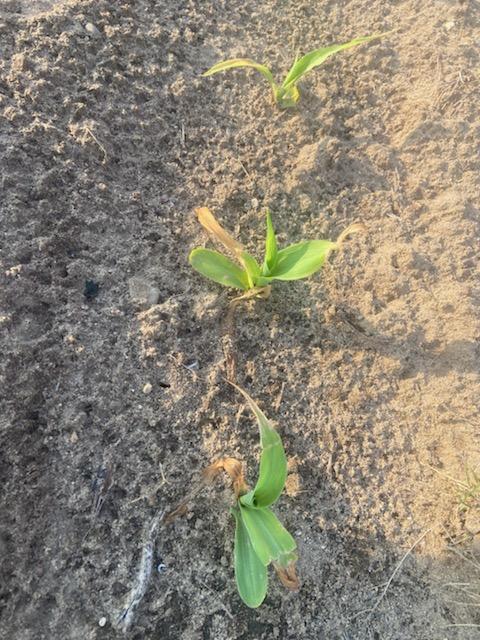
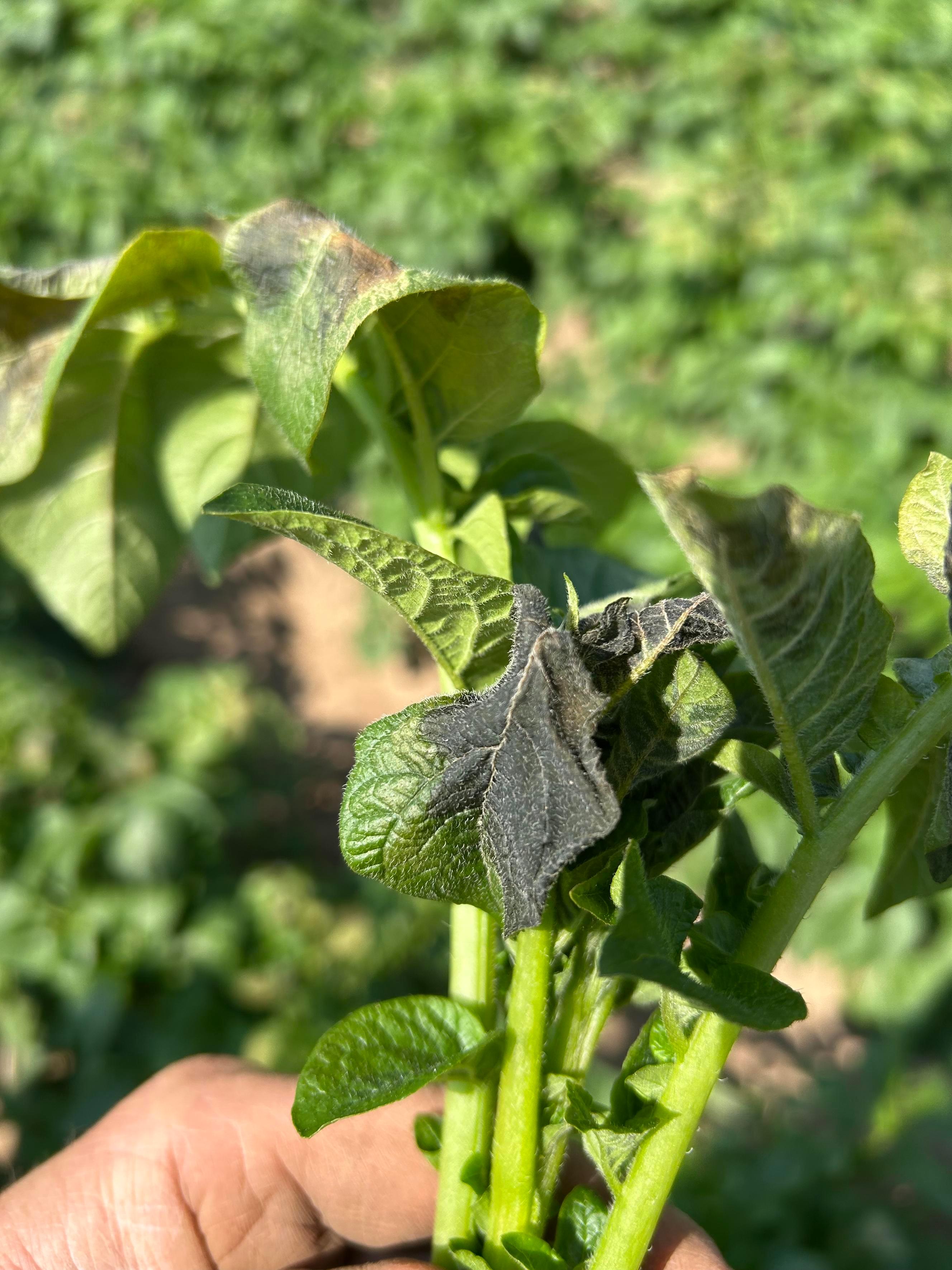
Weekly water use
Estimated crop water use for corn and soybeans varies across the region will depend on their crop stage and evaporative demand. Current irrigation needs will depend on recent rainfall. With some rainfall in the forecast, precipitation may be sufficient in some areas, particularly in the central and southeast portion of the region. Be vigilant for signs of drought stress if rainfall is marginal in your area as shallow root systems have reduced access to soil moisture.
Wheat is currently at peak crop water demand during flowering. Continued monitoring is advised to avoid potential stress or disease.
With recent rainfall, but little chance of rain until next Sunday, it’s important to continue monitoring local weather and soil conditions to adjust your irrigation strategy as the season progresses. Tools like Irrigation Scheduling Tools can help estimate crop water needs and decide timing and application.
Estimated weekly crop water use for field crops in Michigan (inches/week) for the week of June 4-10, 2025
|
Crop |
Growth stage |
Constantine |
Entrican |
Hart |
|
|
Reference ET |
1.13 |
1.22 |
1.12 |
|
Corn |
VE |
0.11 |
0.12 |
0.11 |
|
V2 |
0.20 |
0.22 |
0.20 |
|
|
V4 |
0.39 |
0.43 |
0.39 |
|
|
Soybeans |
VC Cotyledon |
0.11 |
0.12 |
0.11 |
|
V1 1st Node |
0.23 |
0.24 |
0.22 |
|
|
V2 2nd Node |
0.45 |
0.49 |
0.45 |
|
|
Wheat |
Leaf elongation / |
1.01 |
1.10 |
1.01 |
|
Jointing |
1.17 |
1.27 |
1.16 |
|
|
Boot / Heading / Flowering / Grain fill |
1.24 |
1.35 |
1.23 |
The table above presents estimated crop water use for various field crops across three locations in Michigan. This data helps irrigation management decisions by showcasing potential crop evapotranspiration, calculated based on reference evapotranspiration and crop coefficients for each crop growth stage. It is crucial to note that crop water use values vary across regions due to differences in weather conditions, growth stages, agronomic practices and soil properties.
When using these values for irrigation scheduling, be mindful that they assume all applied irrigation water will be utilized by the plants without any loss. Additionally, these values do not account for any precipitation that may occur during the week of calculation.
Reference evapotranspiration data was obtained from Michigan State University Enviroweather, which also offers a model for determining potential crop evapotranspiration. To access this tool, visit Enviroweather, click on "Crops," select your crop and use the potential evapotranspiration tool by choosing your nearest weather station, the latest date of interest and other crop information.
Field Crops Virtual Breakfast Series
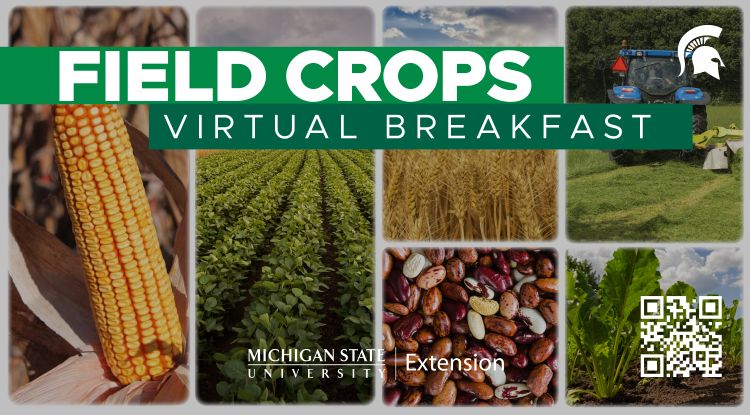.jpg?language_id=1)
A recent agricultural bioterrorism event and wheat fungicides, presented by Dennis Pennington, Marty Chilvers and Eric Olson, was the topic for this week’s MSU Extension Field Crops Virtual Breakfast. Recent reports of two post-doctoral research students charged with conspiracy, smuggling goods into the U.S., false statements and Visa fraud for smuggling Fusarium graminearum into the Detroit airport have left many wondering if the event was an intentional agroterrorism attack or ignorance of the law. Presenters discussed the event, why this would potentially occur, and the role of research to protect Michigan farmers from these threats. The conversation continued with Pennington describing spraying decisions for fungicide applications in wheat, including best practices for ground and aerial/drone spray applications and nozzle selection.
Recordings of this and all the Virtual Breakfast meetings are closed-captioned and available at the Field Crops Virtual Breakfast webpage and the MSU Extension Field Crops Team social media platforms: Facebook, Spotify, YouTube, Apple Podcasts and Twitter/X.
This work is supported by the Crop Protection and Pest Management Program [grant no 2024-70006-43569] from the USDA National Institute of Food and Agriculture. Any opinions, findings, conclusions, or recommendations expressed in this publication are those of the author(s) and do not necessarily reflect the view of the U.S. Department of Agriculture.



 Print
Print Email
Email